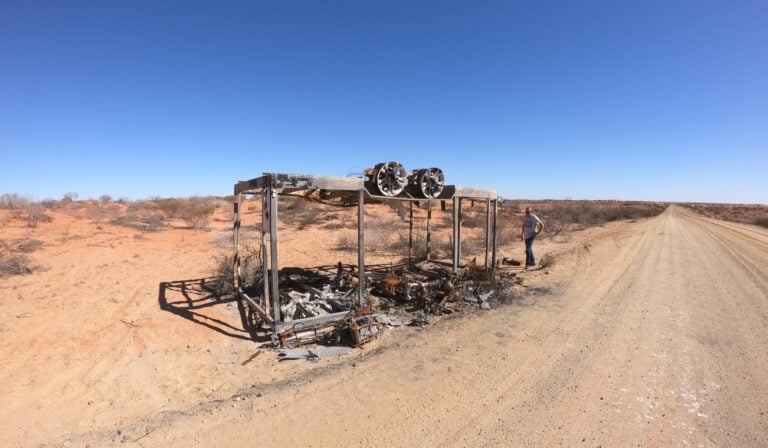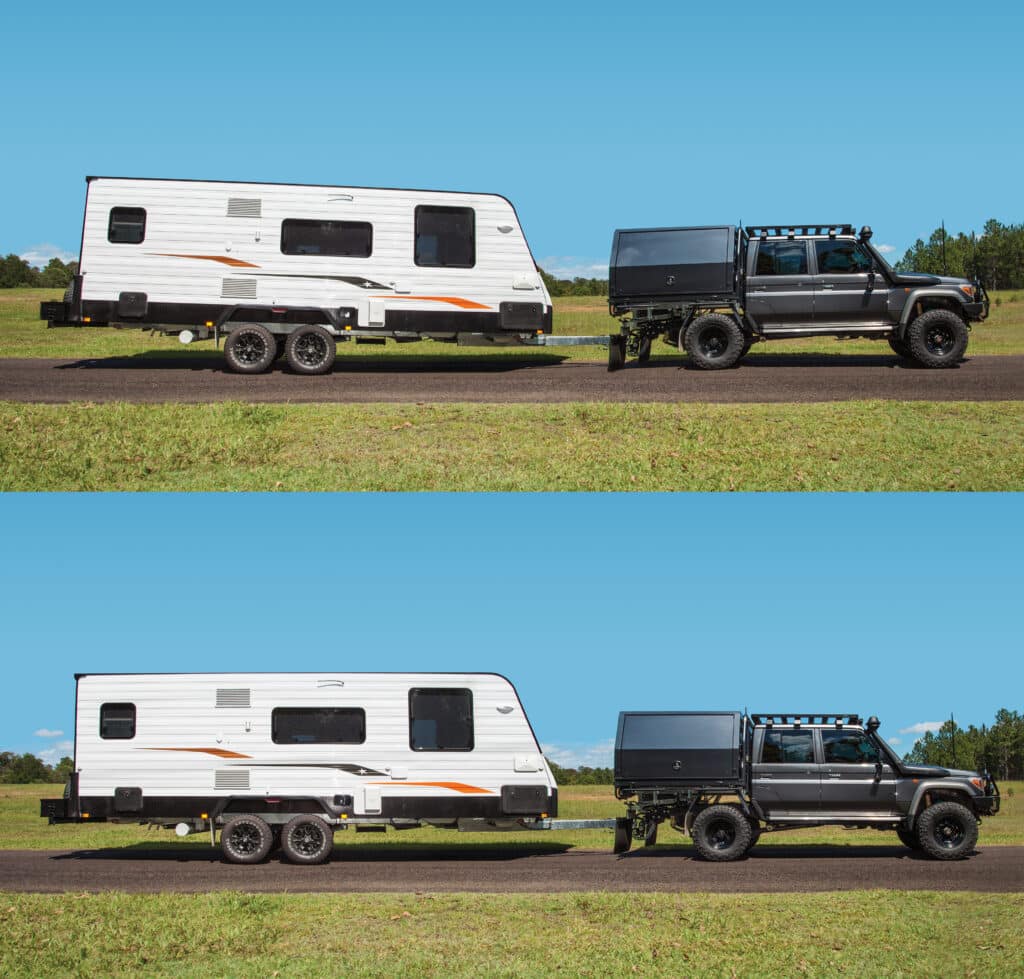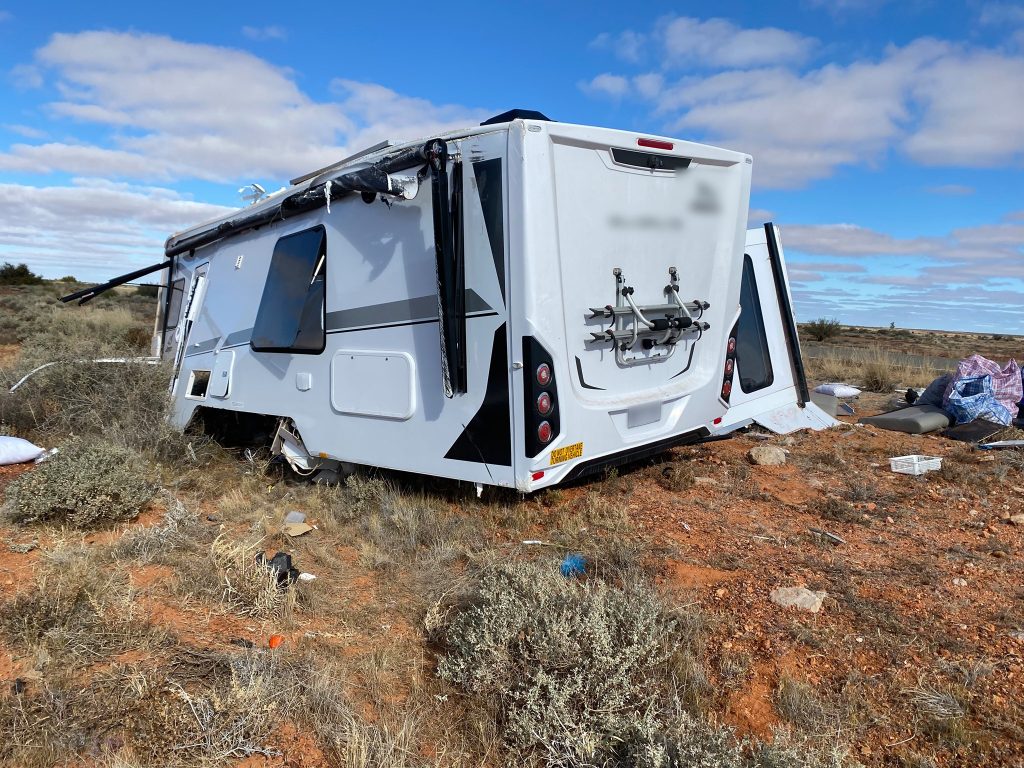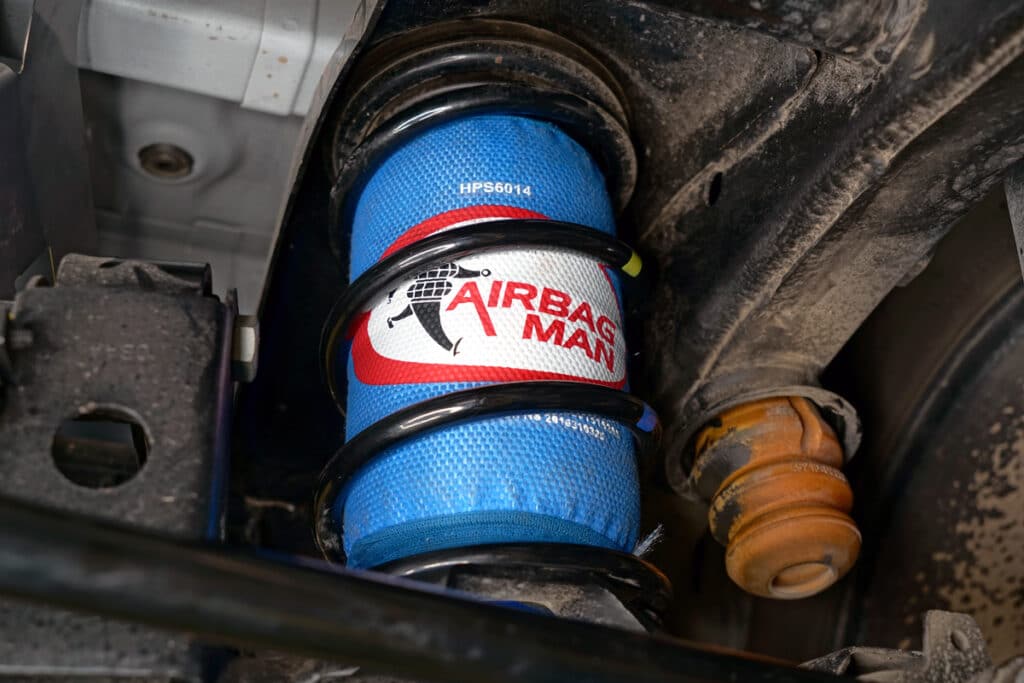Suspension sag – is the weight of your trailer putting you at risk on the road?




Today’s tow vehicles are bigger, heavier and come with more grunt than ever before. Some have a whopping 4.5-tonne towing capacity. But just because you can pull the weight of a rhino, doesn’t mean you should. Not without some after-market modifications.
Enter suspension airbags.
It’s a simple rule of physics that when you attach an extremely heavy object onto the end of another, significant weight strain is transferred. When towing, this strain can cause suspension sag, even if the car and trailer are weight-compliant. Suspension sag occurs when too much load is applied to the rear of the vehicle, taking weight off the front axle. If you’ve ever seen a vehicle tilted down at the tow ball, you will recognise suspension sag. If left unchecked, it can pose a serious danger on the road, impacting braking, handling and trailer sway. It’s also worth having a suspension check at this stage, like those offered free by Fulcrum Suspensions through their click-and-fit services, as this can give added peace of mind before heading off. 4×4 Suspension sag can also reduce ride comfort and vehicle longevity through increased wear and tear.

Handling
Suspension sag can significantly alter the vehicle’s centre of gravity, causing a misalignment of the steering components. A ‘floaty’ front end can result in unpredictable handling, making it harder to steer and control the vehicle, especially on turns or evasive manoeuvres. Increased compression on the rear suspension can also reduce the ability to absorb shocks from the road, creating a much harsher ride. That’s why maintaining a well-balanced suspension system is crucial—not only for comfort but for safety and performance across all driving conditions.
Braking
When the vehicle’s back end is lower than the front axle, braking performance can be severely impacted. This weight distribution imbalance can make the front brakes work harder, potentially resulting in longer braking time and stopping distance or ‘brake fade’. This could be catastrophic in an emergency.

Sway
Vehicle sway is every caravanner’s worst nightmare. And the risk is vastly increased if the tow vehicle is rear leaning. Under these conditions, a trailer is more prone to sway and, even worse, jack-knife, especially if the tow load is poorly balanced. Trailer sway is a risk under any driving conditions, but add high speeds, strong winds, crosswinds or sudden braking, and the threat increases manifold. Once swaying starts, it can be almost impossible to bring the trailer back under control, with serious – sometimes fatal – consequences. Not sure if your vehicle is overweight? Fulcrum’s budget-friendly GVM and towing assessment will offer you peace of mind and save you from any hassle.
Wear and tear
Sagging suspension puts extra strain on various vehicle components, including shocks, springs and the chassis. This can lead to premature wear or failure, resulting in costly repairs and compromised safety. Your tyres will suffer the most. Tyres bear the brunt of uneven weight distribution, causing irregular wear patterns, shortened lifespan and reduced traction and stability, especially in adverse conditions.

Aftermarket airbags, such as those produced by Airbag Man and Fulcrum Suspension’s Formula 4×4, are the silver bullet for suspension sag. They restore the vehicle’s ride height by cushioning the drag weight on the rear axle. Best of all, these ‘helper’ systems work with the vehicle’s existing coil-spring or leaf-spring suspension. They can be inflated when towing to counteract the increased rear weight and maintain suspension balance, then deflated when the tow load is removed. Airbags reduce the need for installing expensive heavy-duty springs and shocks, and minimise the drive impact of these suspension upgrades when not towing.
If your vehicle is on the saggy side, should you really be towing?